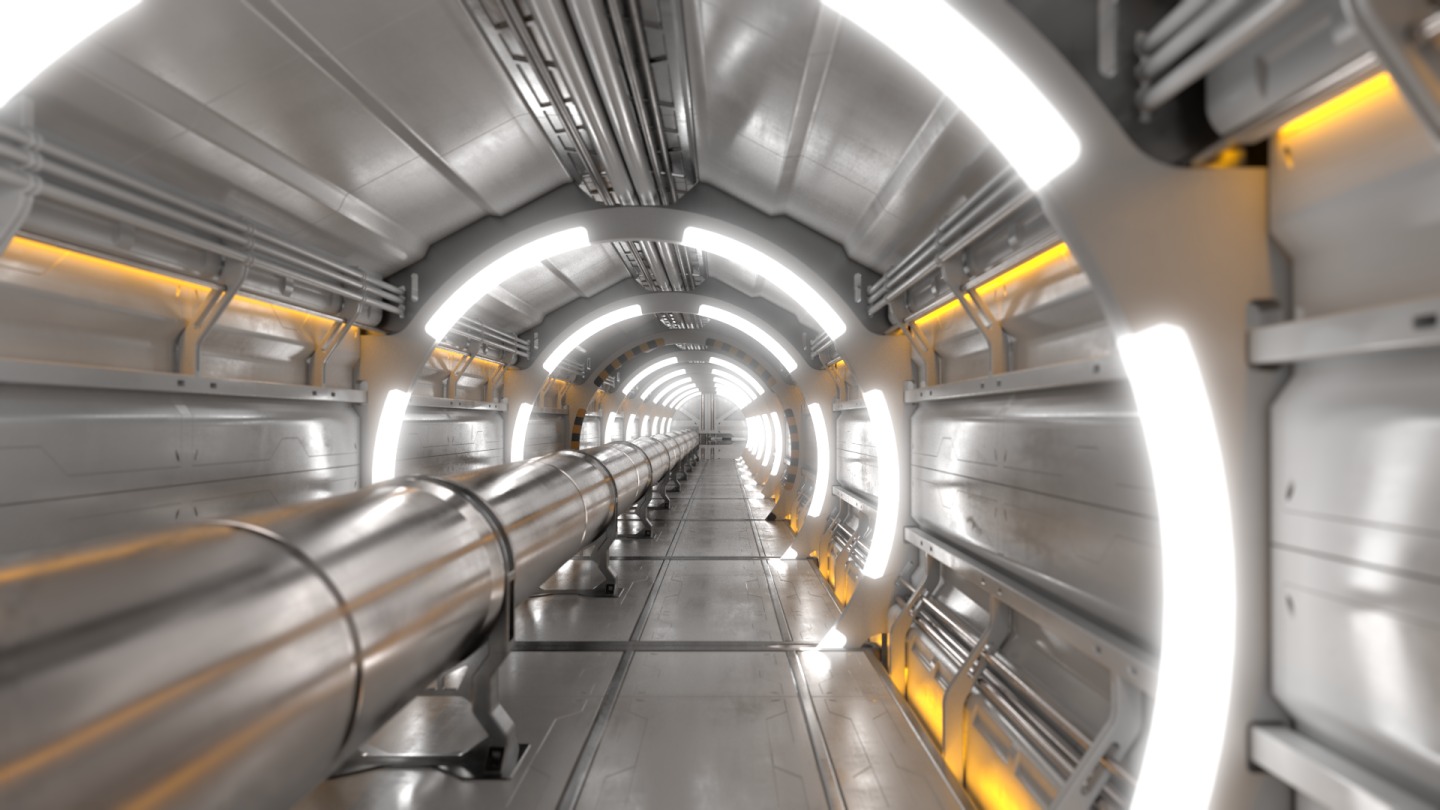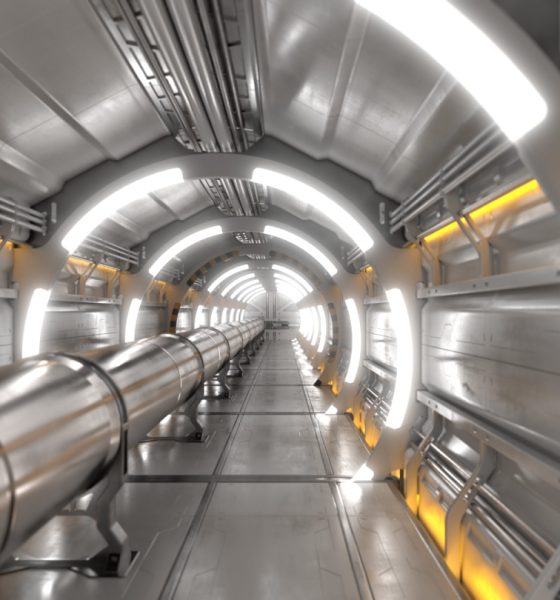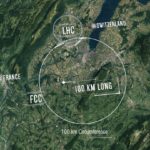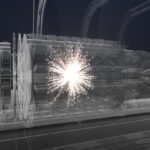The European Organization for Nuclear Research, more commonly known as CERN, recently published an ambitious proposal to build what could only be described as a mammoth accelerator that’s nearly four times as long and up to six times more powerful as its 27-km Large Hadron Collider (LHC), which studies the tiniest particles that make up all matter, dark matter, and infamously, black holes. The project is yet to be greenlit, but if a recent tweet from SpaceX and Tesla CEO Elon Musk is any indication, The Boring Company could play a part in the construction of the ambitious project.
In a tweet on Monday, Musk noted that the director of CERN had been quite interested in the tunneling technologies of The Boring Company, which could play a part in saving costs for the construction of the agency’s next-generation particle collider. Musk noted that by using The Boring Company’s tunnels, the project would likely save “several billion Euros.”
Director of CERN asked me about Boring Co building the new LHC tunnel when we were at the @royalsociety. Would probably save several billon Euros.
— Elon Musk (@elonmusk) January 21, 2019
The particle physics laboratory, which operates in a site near Geneva, Switzerland, outlined its plans for the 100-km LHC successor, dubbed as the “Future Circular Collider” (FCC), last Tuesday. The FCC is expected to replace the LHC, whose most notable success so far has been the discovery of the Higgs boson, a previously-theoretical particle that gives mass to all matter. Since the discovery of the Higgs boson in 2012, though, CERN’s Large Hadron Collider has not been able to discover any new particles of the same significance. This, according to Gian Francesco Giudice, CERN’s theory department head, highlights a need to push collider technologies forward.
“Today, exploring the highest possible energies with bold projects is our best hope to crack some of the mysteries of nature at the most fundamental level,” he said, according to Nature.
The possibilities that could be unlocked by a project as ambitious as the Future Circular Collider could easily come from a sci-fi tale. It would not be an exaggeration to state that the FCC would enable physicists to open the door to as-yet-unknown physics, while helping answer a number of notable questions about the universe. First off, the FCC would help CERN scientists study the Higgs boson more extensively — something that is not possible with the LHD. The project is also expected to allow scientists to explore topics such as dark matter and antimatter.
- The size of the FCC compared to the LHD. (Photo: CERN)
- An artist’s image depicting particles colliding. (Photo: CERN)
CERN’s Future Circular Collider is expected to be four times as large and up to six times more powerful than its predecessor. (Photos: CERN)
While the possibilities presented by CERN’s proposed 100-km particle collider are vast, the Future Circular Collider does have its fair share of drawbacks — the most notable of which is the cost of the entire project. CERN’s report on the FCC estimates that the project’s tunnels alone would cost €5 billion ($5.7 billion) to build. Another €4 billion ($4.6 billion) is expected to be required for the first collider (which will collide leptons), while €4 billion ($4.6 billion) would likely be needed for the final collider (which is designed to collide protons). Provided that the ambitious project does not meet any substantial difficulties in its construction, the FCC could be operational by 2040.
This is where The Boring Company’s technologies could come in. The tunneling startup, after all, aims to reduce the costs of tunneling through optimizations in the digging process. So far, The Boring Company is only involved in projects involving transportation, such as the construction of the high-profile downtown Chicago-O’Hare high-speed transport line. The cost savings presented by The Boring Company’s tunnels were particularly evident when Elon Musk revealed the cost of the startup’s mile-long test tunnel in Hawthorne, CA last December. During his presentation, Musk noted that the Hawthorne tunnel cost $10 million to construct. This is far more affordable than traditional tunneling costs, which cost most U.S. local and state governments an average of $200-$500 million dollars per mile.
Granted, the requirements for CERN’s 100-km tunnel would be far more than demanding than the otherwise straightforward tunnels that The Boring Company will construct in the immediate future. That said, the rather generous timeframe for the Future Circular Collider would also give The Boring Company some time to further refine and optimize its tunneling technologies. For now, though, the prospect of CERN’s next-generation LHD’s tunnels being dug by The Boring Company would remain an idea that would only get more plausible over time.

News
Tesla Diner defies the ‘Doom’ narrative: Profitable, Popular, and Here to Stay

The Tesla Diner has been subject to many points of criticism since its launch in mid-2025, and skeptics and disbelievers claim the company’s latest novel concept is on its way down, but there’s a lot of evidence to state that is not the case.
The piece cites anecdotal evidence like empty parking lots, more staff than customers during a December visit, removed novelty items, like Optimus robot popcorn service and certain menu items, the departure of celebrity chef Eric Greenspan in November 2025, slow service, high prices, and a shift in recent Google/Yelp reviews toward disappointment.
The piece frames this as part of broader Tesla struggles, including sales figures and Elon Musk’s polarizing image, calling it a failed branding exercise rather than a sustainable restaurant.
This narrative is overstated and sensationalized, and is a good representation of coverage on Tesla by today’s media.
Novelty Fade is Normal, Not Failure
Any hyped launch, especially a unique Tesla-branded destination blending dining, Supercharging, and a drive-in theater, naturally sees initial crowds taper off after the “Instagram effect” wears down.
Tesla makes major change at Supercharger Diner amid epic demand
This is common for experiential spots in Los Angeles, especially pop-up attractions or celebrity-backed venues. The article admits early success with massive lines and social media buzz, but treats the return to normal operations as “dying down.”
In reality, this stabilization is a healthy sign of transitioning from hype-driven traffic to steady patronage.
Actual Performance Metrics Contradict “Ghost Town” Claims
- In Q4 2025, the Diner generated over $1 million in revenue, exceeding the average McDonald’s location
- It sold over 30,000 burgers and 83,000 fries in that quarter alone. These figures indicate a strong ongoing business, especially for a single-location prototype focused on enhancing Supercharger experiences rather than competing as a mass-market chain
It’s not a ghost town lol. The @Tesla Diner still had over 30,000 burger orders and 83,000 fries orders in Q4. The diner generated over $1M in revenue in Q4, a $4M annual run rate, which is more than the average McDonald’s…. pic.twitter.com/XvAGLUqxej
— Sawyer Merritt (@SawyerMerritt) January 4, 2026
Conflicting On-the-Ground Reports
While the article, and other similar pieces, describe a half-full parking lot and sparse customers during specific off-peak visits, other recent accounts push back:
- A January 2026 X post noted 50 of 80 Supercharger stalls were busy at 11 a.m., calling it “the busiest diner in Hollywood by close to an order of magnitude
TESLA DINER 🍔
Frantic!!!
Crazy busy. pic.twitter.com/wMbmr8SFFn
— Rich & Sharon (@HullTeslaModel3) January 4, 2026
- Reddit discussions around the same time describe it as not empty when locals drive by regularly, with some calling the empty narrative “disingenuous anti-Tesla slop.”
When we visited it last week it was packed. We had to wait to enter, get a table and go to the restroom. We were lucky to find a spot to charge.
— Rani G (@ranig) January 4, 2026
Bottom Line
The Tesla Diner, admittedly, is not the nonstop circus it was at launch–that was never sustainable or intended. But, it’s far from “dying” or an “empty pit stop.”
It functions as a successful prototype: boosting Supercharger usage, generating solid revenue, and serving as a branded amenity in the high-traffic EV market of Los Angeles.
News
Tesla stands to win big from potential adjustment to autonomous vehicle limitations
Enabling scale, innovation, and profitability in a sector that is growing quickly would benefit Tesla significantly, especially as it has established itself as a leader.

Tesla stands to be a big winner from a potential easing of limitations on autonomous vehicle development, as the United States government could back off from the restrictions placed on companies developing self-driving car programs.
The U.S. House Energy and Commerce subcommittee will hold a hearing later this month that will aim to accelerate the deployment of autonomous vehicles. There are several key proposals that could impact the development of self-driving cars and potentially accelerate the deployment of this technology across the country.
These key proposals include raising the NHTSA’s exemption cap from 2,500 to 90,000 vehicles per year per automaker, preempting state-level regulations on autonomous vehicle systems, and mandating NHTSA guidelines for calibrating advanced driver assistance systems (ADAS).
Congress, to this point, has been divided on AV rules, with past bills like the 2017 House-passed measure stalling in the Senate. Recent pushes come from automakers urging the Trump administration to act faster amid competition from Chinese companies.
Companies like Tesla, who launched a Robotaxi service in Austin and the Bay Area last year, and Alphabet’s Waymo are highlighted as potential beneficiaries from lighter sanctions on AV development.
The NHTSA recently pledged to adopt a quicker exemption review for autonomous vehicle companies, and supporters of self-driving tech argue this will boost U.S. innovation, while critics are concerned about safety and job risks.
How Tesla Could Benefit from the Proposed Legislation
Tesla, under CEO Elon Musk’s leadership, has positioned itself as a pioneer in autonomous driving technology with its Full Self-Driving software and ambitious Robotaxi plans, including the Cybercab, which was unveiled in late 2024.
The draft legislation under consideration by the U.S. House subcommittee could provide Tesla with significant advantages, potentially transforming its operational and financial landscape.
NHTSA Exemption Cap Increase
First, the proposed increase in the NHTSA exemption cap from 2,500 to 90,000 vehicles annually would allow Tesla to scale up development dramatically.
Currently, regulatory hurdles limit how many fully autonomous vehicles can hit the roads without exhaustive approvals. For Tesla, this means accelerating the rollout of its robotaxi fleet, which Musk envisions as a network of millions of vehicles generating recurring revenue through ride-hailing. With Tesla’s vast existing fleet of over 6 million vehicles equipped with FSD hardware, a higher cap could enable rapid conversion and deployment, turning parked cars into profit centers overnight.
Preempting State Regulations
A united Federal framework would be created if it could preempt State regulations, eliminating the patchwork of rules that currently complicate interstate operations. Tesla has faced scrutiny and restrictions in states like California, especially as it has faced harsh criticism through imposed testing limits.
A federal override of State-level rules would reduce legal battles, compliance costs, and delays, allowing Tesla to expand services nationwide more seamlessly.
This is crucial for Tesla’s growth strategy, as it operates in multiple markets and aims for a coast-to-coast Robotaxi network, competing directly with Waymo’s city-specific expansions.
Bringing Safety Standards to the Present Day
Innovation in the passenger transportation sector has continued to outpace both State and Federal-level legislation, which has caused a lag in the development of many things, most notably, self-driving technology.
Updating these outdated safety standards, especially waiving requirements for steering wheels or mirrors, directly benefits Tesla’s innovative designs. Tesla wanted to ship Cybertruck without side mirrors, but Federal regulations required the company to equip the pickup with them.
Cybercab is also planned to be released without a steering wheel or pedals, and is tailored for full autonomy, but current rules would mandate human-ready features.
Streamlined NHTSA reviews would further expedite approvals, addressing Tesla’s complaints about bureaucratic slowdowns. In a letter written in June to the Trump Administration, automakers, including Tesla, urged faster action, and this legislation could deliver it.
In Summary
This legislation represents a potential regulatory tailwind for Tesla, but it still relies on the government to put forth action to make things easier from a regulatory perspective. Enabling scale, innovation, and profitability in a sector that is growing quickly would benefit Tesla significantly, especially as it has established itself as a leader.
News
Nvidia CEO Jensen Huang explains difference between Tesla FSD and Alpamayo
“Tesla’s FSD stack is completely world-class,” the Nvidia CEO said.

NVIDIA CEO Jensen Huang has offered high praise for Tesla’s Full Self-Driving (FSD) system during a Q&A at CES 2026, calling it “world-class” and “state-of-the-art” in design, training, and performance.
More importantly, he also shared some insights about the key differences between FSD and Nvidia’s recently announced Alpamayo system.
Jensen Huang’s praise for Tesla FSD
Nvidia made headlines at CES following its announcement of Alpamayo, which uses artificial intelligence to accelerate the development of autonomous driving solutions. Due to its focus on AI, many started speculating that Alpamayo would be a direct rival to FSD. This was somewhat addressed by Elon Musk, who predicted that “they will find that it’s easy to get to 99% and then super hard to solve the long tail of the distribution.”
During his Q&A, Nvidia CEO Jensen Huang was asked about the difference between FSD and Alpamayo. His response was extensive:
“Tesla’s FSD stack is completely world-class. They’ve been working on it for quite some time. It’s world-class not only in the number of miles it’s accumulated, but in the way it’s designed, the way they do training, data collection, curation, synthetic data generation, and all of their simulation technologies.
“Of course, the latest generation is end-to-end Full Self-Driving—meaning it’s one large model trained end to end. And so… Elon’s AD system is, in every way, 100% state-of-the-art. I’m really quite impressed by the technology. I have it, and I drive it in our house, and it works incredibly well,” the Nvidia CEO said.
Nvidia’s platform approach vs Tesla’s integration
Huang also stated that Nvidia’s Alpamayo system was built around a fundamentally different philosophy from Tesla’s. Rather than developing self-driving cars itself, Nvidia supplies the full autonomous technology stack for other companies to use.
“Nvidia doesn’t build self-driving cars. We build the full stack so others can,” Huang said, explaining that Nvidia provides separate systems for training, simulation, and in-vehicle computing, all supported by shared software.
He added that customers can adopt as much or as little of the platform as they need, noting that Nvidia works across the industry, including with Tesla on training systems and companies like Waymo, XPeng, and Nuro on vehicle computing.
“So our system is really quite pervasive because we’re a technology platform provider. That’s the primary difference. There’s no question in our mind that, of the billion cars on the road today, in another 10 years’ time, hundreds of millions of them will have great autonomous capability. This is likely one of the largest, fastest-growing technology industries over the next decade.”
He also emphasized Nvidia’s open approach, saying the company open-sources its models and helps partners train their own systems. “We’re not a self-driving car company. We’re enabling the autonomous industry,” Huang said.












